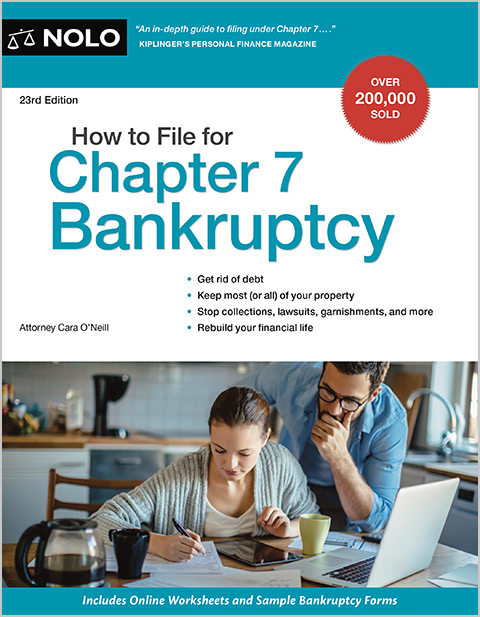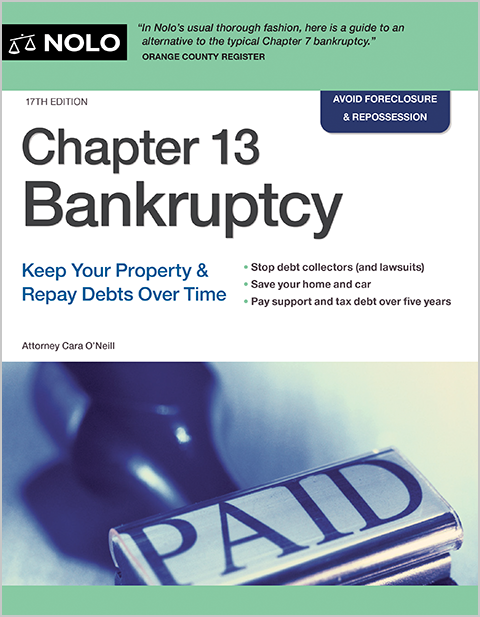Amending a bankruptcy form is usually an easy process. Here's how to do it.
If you made a mistake or forgot to include something in your initial bankruptcy filing, you can correct the error by amending the bankruptcy petition, schedule, or form. In this article, you'll learn the basics needed to amend the bankruptcy petition, including:
- why you might need to file a bankruptcy amendment form
- when you'll amend bankruptcy schedules, and
- the steps required to amend a bankruptcy form in Chapters 7 and 13.
We also explain when you might need to reopen a closed bankruptcy case in the "How to Amend a Bankruptcy Petition or Form After Bankruptcy" section at the end of the article.
Reasons to Amend a Bankruptcy Form
Everyone does their best to complete their bankruptcy paperwork accurately. However, if you later discover an error, you'll need to fix the issue by changing or "amending" it once you realize your paperwork isn't entirely accurate.
The reasons you might need to amend your bankruptcy paperwork include:
Making a mistake. The most common reason for amending a bankruptcy form is a mistake on the set initially filed with the court. Errors can range from getting an address wrong to miscalculating your income.
Omitting information. You might also need to fix your bankruptcy forms if you accidentally forgot to include information, such as a creditor or asset.
Changing circumstances. Sometimes your circumstances change during a bankruptcy case. For instance, you might have gotten laid off shortly after filing or moved out of a relative's home into a rental. You'll want to amend the forms to reflect the change in income, address, or any other changed circumstances.
When You'll Amend the Bankruptcy Petition and Other Bankruptcy Forms
If you're reading this article, you're likely well into the bankruptcy process and already know that it starts when a debtor files a packet of bankruptcy forms with the court's clerk. Below you'll find examples of when you might amend the bankruptcy petition, a schedule, or another form.
When You'll Amend the Bankruptcy Petition
Filing the primary form, the bankruptcy petition, starts the case. It provides identifying information such as the debtor's name and address and the type of bankruptcy chapter the debtor wishes to file.
The most common reason you might amend the bankruptcy petition is to change your name to match the identification presented at the 341 meeting of creditors. This can happen when the bankruptcy trustee notices a slight difference between the name on the petition and your driver's license, military I.D., or passport.
For instance, if you listed your name as John Doe on the petition, but your driver's license reads Jonathon Martin Doe, the trustee might ask you to amend the petition to reflect your full legal name.
When You'll Amend a Bankruptcy Schedule
A debtor must disclose all financial information, like income, expenses, assets, and debts, on bankruptcy forms called "schedules." You'll want to fix any discrepancies or changes to the information provided in the schedules filed with the bankruptcy petition.
When You'll Amend Another Bankruptcy Form
The other form you'd most likely need to amend would be Your Statement of Financial Affairs. This extensive form includes questions about your financial history and dealings, including creditor payments, gifts, property you're holding for someone else, lawsuits, business information, and more.
It's common to amend this form to fix omissions. You might have forgotten to list a savings account with a minimum balance you rarely use or a retirement account you cashed out a few months before filing. Or you might need to amend your property transfer history if you forgot to list a car given to a college-age child.
Steps for Amending the Bankruptcy Petition, Schedule, or Another Form
Here are the basic steps you'll take when amending a bankruptcy form. Each court's particular amendment procedures can be found on the court's website if you're filing without an attorney.
1. Find the necessary bankruptcy forms.
You'll start by getting a clean copy of the form you want to amend from the U.S. Courts bankruptcy form page.
2. Find your court's bankruptcy form amendment procedure.
Search your local bankruptcy court's website for the amendment filing procedures. The procedure should be in the court's local rules. You might need to submit only the amended information or copy the unchanged information from the original form.
The local rules will also explain if the amended form requires a cover sheet. Not all forms do, but if it's necessary, you should be able to download a cover sheet from the court's website. You can find the court's website using the Federal Court Finder tool.
3. Complete the bankruptcy form using the amended information.
You'll type "Amended" at the top of the form and specify whether you are adding, deleting, or correcting information. This step alerts the court and others that information has changed.
Follow the form's instructions and your court's local rules when completing it. If there was a mistake on the original form, fill in the corrected information on the new blank form, or, if you omitted something, include it.
4. File and serve the amended bankruptcy forms.
Before filing the form, you'll want to review the fee schedule. You'll pay to file some amended forms, but not all of them. You'll also need to serve copies of the amended form by providing them to the bankruptcy trustee and the affected creditors.
Learn more about the basics of completing bankruptcy forms.
How to Amend a Bankruptcy Petition or Form After Bankruptcy
Sometimes it's necessary to amend a filing in your bankruptcy case after the case is over. Perhaps you want to notify a newly discovered creditor of the bankruptcy case, or a reportable event occurred that you must disclose, such as receiving an inheritance or lottery win within the reporting period.
In such cases, you'll likely need to file a motion asking the court to reopen your bankruptcy case so you can amend your filing. Because this rarely happens, it would be advisable to consult with a local bankruptcy lawyer about whether it would be necessary, the ramifications, and the process.
Need More Bankruptcy Help?
Did you know Nolo has been making the law easy for over fifty years? It's true—and we want to make sure you find what you need. Below you'll find more articles explaining how bankruptcy works. And don't forget that our bankruptcy homepage is the best place to start if you have other questions!
|
Our Editor's Picks for You |
|
|
More Like This |
|
|
Other Articles You Might Like |
What Happens at the Chapter 7 Bankruptcy Meeting of Creditors What Happens at the Chapter 13 Bankruptcy Meeting of Creditors |
|
Helpful Bankruptcy Sites |
We wholeheartedly encourage research and learning, but online articles can't address all bankruptcy issues or the facts of your case. The best way to protect your assets in bankruptcy is by hiring a local bankruptcy lawyer.

